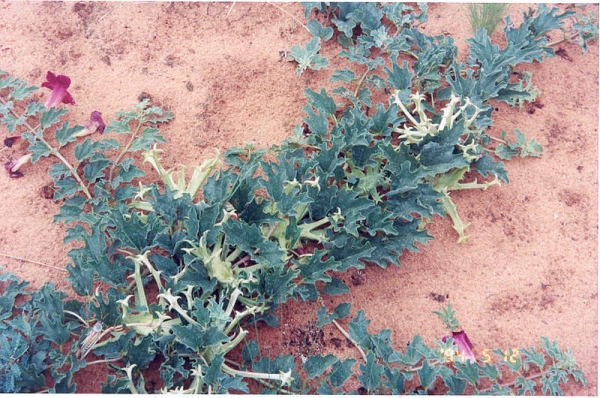Complexity of herbal nomenclature becomes point of vulnerability for industry

Herbs that offer medicinal properties have been named and categorized one way or another in cultures around the world for almost as long as writing systems have existed. Herbal preparations came to be known by a myriad of names, and were grouped in almost as many categorization systems, based on how they affected the body. These schemes themselves were informed by how the individual cultures viewed health and homeostasis, whether it was the allopathic outlook of Western medicine or one of the many energetic systems of Eastern medicinal traditions.
That background provides a rich and varied tradition upon which a practitioner or a product formulator might draw. But it is a complicated situation for quality control personnel. How can they best know what to look for, and to apply the right tests to know that they’ve got what they were seeking?
Naming the proucts in the industry
As the herbal products developed more and more toward mainstream commerce, the early leaders of the industry came together to try to formulate a list of what was on the market, grouped by agreed-upon common names. That effort became the first Herbs of Commerce reference work, released by the American Herbal Products Association in 1992.
“AHPA is to be commended for taking leadership way back in 1992 in helping to standardize the the nomenclature used in the industry,” said Mark Blumenthal, executive director of the American Botanical Council.
The first edition of the work included more than 550 botanicals then in commerce, and referenced the Latin binomial names of botanicals under each common name. It came to be recognized by the Food and Drug Administration as the authoritative work on the subject in the United States. A second edition, published some eight years later, added more than 1,000 botanicals to the list.
“In 1999 FDA incorporated the first edition by reference into federal regulation,” AHPA president Michael McGuffin told NutraIngredients-USA. “We were then in the process of producing the second edition that came out in 2000, but it is the first edition that is still incorporated into the regulations.
“The goal was to apply the standard framework common to all foods in which ingredients are supposed to be identified by their common names. At the time we did see cases of the same plant referred to by several different names,” he said. McGuffin said a third edition is under development, and when it is ready for release, an effort might be undertaken to update the reference in the federal regulation.
One of the underlying motivations of the continued development of the work was not nomenclature definition per se, but rather to assess what has been on the market, and what people were calling those products, to try to come up with something that could help make that case that a given product could qualify as a grandfathered Old Dietary Ingredient as defined in the Dietary Supplement Health and Education Act, which went into effect in 1994. Ingredients that could be shown to be on the market as of Oct. 15 of that year would have no need to go through the New Dietary Ingredient notification process.
“In the 2000 edition we solicited our members to tell us all the names they were using for ingredients they were marketing prior to Oct. 15, 1994. We ended up with about 2,200 plants on the list. We then circulated that list pretty actively among about 12 to 15 reviewers,” McGuffin said.
That effort, unfortunately, failed to convince regulators, who up to now have not accepted any list provided by industry of Old Dietary Ingredients, preferring to judge those situations that have come into question on a case by case basis.
“They didn’t necessarily have the documentation to prove that the herbs were that were on the list were actually in the market. For companies trying to prove an ODI case, though, at least it is a place to start,” Blumenthal said.

Why devil’s claw?
Schneiderman did refer to Herbs of Commerce and hinged the warning letters letters he sent to 13 companies marketing devil’s claw supplements in New York state based on an entry in that work. That reference, from the 1992 edition, shows one species under the common name of devil’s claw: Harpagophytum procumbens, though a second Harpagophytum zeyheri, is commonly accepted as being interchangeable. It has been a question circulating in industry since the warning letters were first announced last week. Why devil’s claw? So little of the of the botanical is sold that very, very few consumers in New York were affected. Some observers fear that it may be part of a plan to establish a precedent for future actions.
According to pharmacopoeial literature, willow bark, for example, can come from any of six (or potentially more) species in the Salix genus and still be called willow bark and still do what willow bark is supposed to do from a traditional herbal medicine perspective. The fear of some in industry is that Schneiderman could come in and say, which of these six species do you have in your product? The way the botanical comes from the harvesters, it tends to be all mixed up, from different locations and contain varying amounts of the different species. It would be difficult if not impossible to differentiate them because they are all very similar. From a functional perspective, this is no big deal. But the worry is that Schneiderman could use this variability to further his case that herbal companies have very little idea of what they are putting into the bottles.
“From a traditional herbal medicine perspective multiple species of a particular genus often are used interchangeably. That has been codified in pharmacognosy literature and has been codified in pharmacopoeial reference works since that literature was first available. And it is still that way today,” said Roy Upton, executive director of the American Herbal Pharmacopoeia.
“In willow bark, for example, if they all look the same, taste the same, smell the same and contain the right amount of salicin, they they are all allowed as an officially accepted ingredient for Salix products,” he said.
The fact that a species might not appear in Herbs of Commerce does not necessarily exclude it from being acceptable. Both McGuffin and Upton said the clear implication in the work is that references in other authoritative works are to be considered valid additions when they expand upon an Herbs of Commerce reference.
“The one piece that the attorney general seems to have missed is that Herbs of Commerce has a stated intention to have each common name listed there apply to only one individual species, except in cases where more than one species is considered in authoritative pharmacopeial literature to be interchangeable.”,” McGuffin said.
Given that the NY AG office seems to have taken the zeyheri omission in Herbs of Commerce as authoritative, McGuffin said it should come as no surprise if Scheniderman tries to make this case with other, perhaps better-selling herbs.
“We should not be surprised if there is another attempt to do the same thing,” McGuffin said.
















